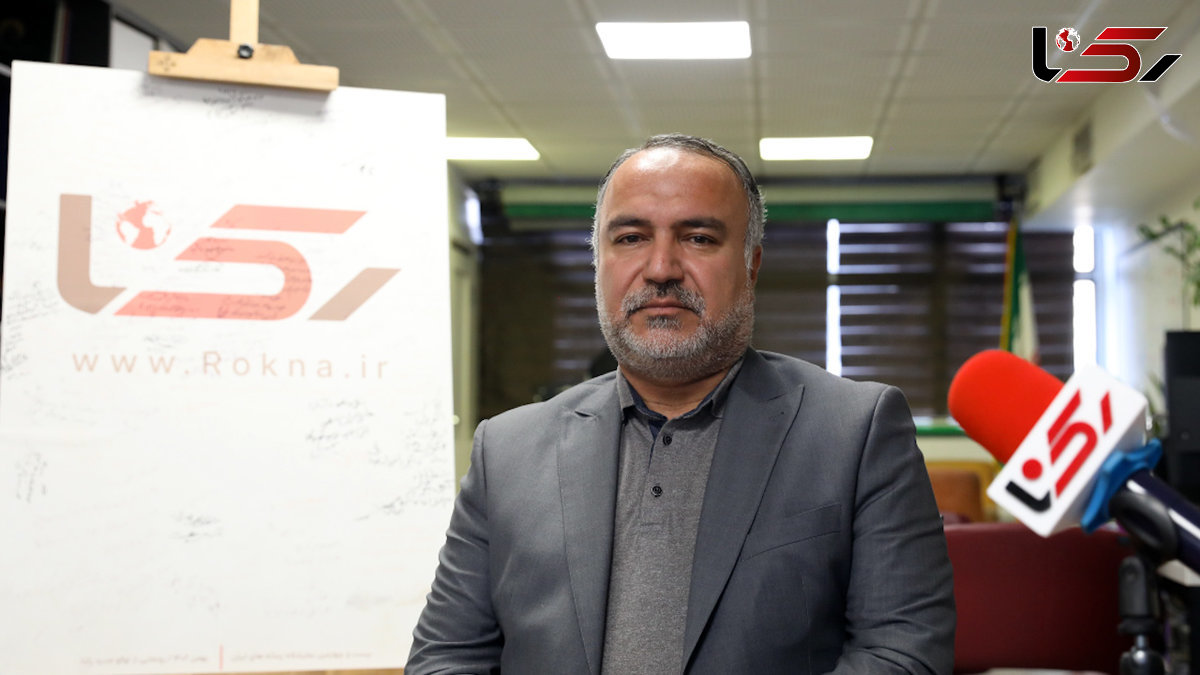Bank Card for Foreign Tourists on the Way / The Role of Free Zones During the 12-Day War + Video
Rokna Economic Desk: Mehdi Mazinani, Deputy for Cultural, Social, and Tourism Affairs at the Secretariat of the Supreme Council of Free Trade–Industrial and Special Economic Zones, announced new development programs for free zones in the fields of tourism, cultural exchanges, and the specialization of each region based on its relative advantages. He described the introduction of a “Tourism Card” to facilitate financial transactions for foreign visitors as the most important recent initiative. Mazinani also highlighted the drafting of a cultural charter, strengthening communication infrastructure with neighboring countries, and the role of free zones in crisis management, such as during the 12-day war.

According to Rokna, Mazinani elaborated on the initiatives, capacities, and future plans of the country’s free zones in an interview with our correspondent.
Engagement with Regional and Gulf Countries
Mazinani explained that Iran’s free zones, mostly located in border regions, have so far received limited attention in terms of cultural and tourism exchanges with neighboring countries. He noted, however, that planning is underway to remedy these shortcomings. As an example, he referred to the Arvand Free Zone, which receives between 15,000 and 20,000 daily visitors from Basra and Iraq for educational, medical, and tourism purposes, underscoring the strong cultural ties in that region. He further pointed out that Qeshm and Kish, due to their historic maritime connections, have extensive relations with Gulf littoral states.
He added: “One of our serious priorities is to expand the exchange of tourists, an issue that has been neglected in past years. Today, the government has come to the conclusion that tourism can become the country’s leading source of income. Accordingly, support packages and investment opportunities in tourism—particularly medical tourism—have been designed and communicated to the free zones. In the field of maritime transport as well, infrastructural projects are underway to strengthen links with Gulf countries and northern neighbors such as the Republic of Azerbaijan and Armenia.”
Tourism Card for Foreign Nationals
Mazinani identified the design and implementation of a “Tourism Card” as one of the most significant recent measures, explaining: “Due to sanctions, foreign tourists were previously forced to bring cash into the country and faced numerous difficulties in spending it. For the first time in free zones, the tourism card has been developed with the assistance of knowledge-based companies. Foreign visitors can deposit their foreign currency into this card, convert it into rials via a designated application, and use it like domestic bank cards for purchases, hotel reservations, and other services.”
The Concept of Free Zones for Iranian Society
Responding to the general perception that free zones embody a distinct and costly lifestyle, Mazinani stated: “By definition, free zones must exhibit differences from the mainland to facilitate investment and international interaction. Unfortunately, however, many of their legal advantages have not yet been realized. Apart from Kish, which is inherently structured differently, most free zones such as Arvand, Anzali, or Chabahar are not substantially different from other cities.”
He went on to say: “Our strategy is to move toward specialization in free zones. For instance, Kish will focus on tourism and the digital economy, Arvand on tourism and healthcare, Chabahar—as an ocean port—on imports and exports, and Maku and Aras on logistics and nature-based activities. Each region will be developed according to its relative advantage.”
Cultural Charter for Free Zones
Emphasizing the importance of cultural dimensions, Mazinani noted: “Free zones are not only economic entities but also places of residence and community life. Therefore, a comprehensive charter is needed to guide cultural, social, sports, and educational activities, preventing policy-making from becoming arbitrary. This document has been in the drafting stage for the past nine months with the cooperation of the Supreme Council of the Cultural Revolution and local elites in the free zones, and will soon be finalized.”
The Role of Free Zones During Crises (The 12-Day War)
Addressing recent crises, Mazinani referred to the experience of Kish Island during the 12-day war and said: “When flights were suspended, over 7,000 tourists remained on the island. An emergency session was held in Tehran that very day, and it was decided to use sea routes to transfer tourists to Bandar Charak. From there, free buses were arranged to transport them to Bandar Abbas and Shiraz. Within four to five days, all visitors were evacuated. Furthermore, hotels offered up to 80 percent discounts, and in certain cases costs were covered by the Kish Free Zone Organization. Despite minor shortcomings, the operation was carried out with approximately 95 percent success.”
In conclusion, Mazinani stressed: “Beyond their economic capacities, free zones play a vital role in crisis management, cultural exchanges, and the development of tourism. We are working to strengthen this role at both national and regional levels.”
Send Comments